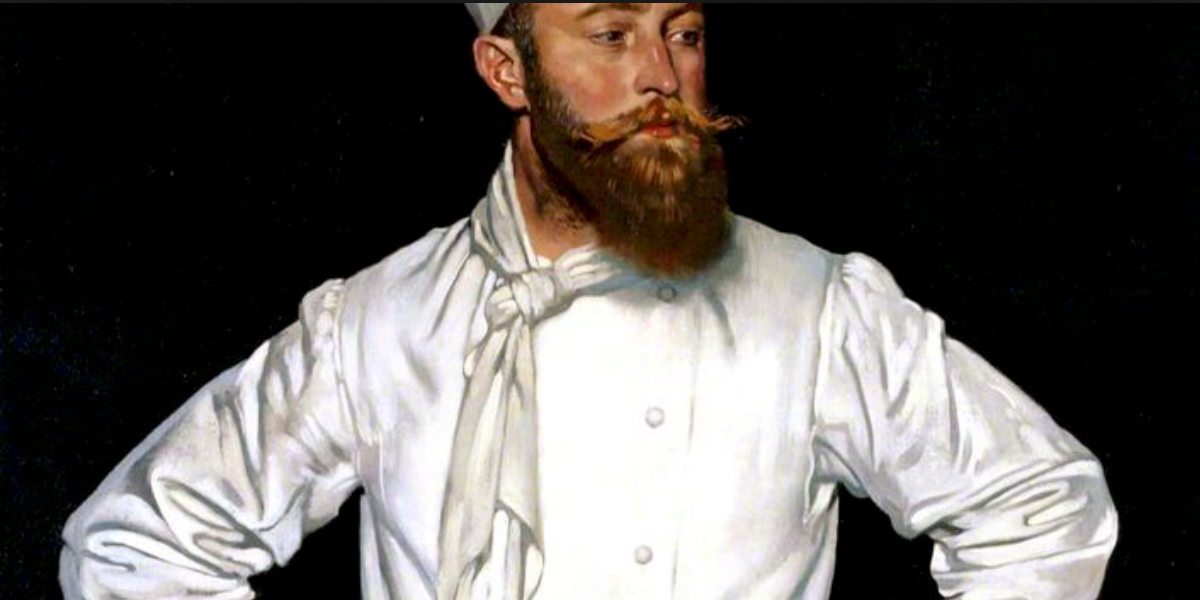
Antonin Carême The Fate of a Master
It would be impossible to discuss the history of French Cuisine without the mention of his name, Antonin Careme. He was a Chef of unparalleled talents and is certainly one of the greatest culinary inspirations of all time known for having breathed new life into the Art of French Living. Though he came from humble beginnings it was the aristocracy and bourgeoisie that raised him high in the ranks of being a distinguished Scientist of Gastronomy. Careme is considered to be the most renowned chef of the nineteenth century and his prestigious creations continue to nourish our gastronomic heritage.
Of modest origins
Careme was born in Paris in 1783 into conditions of extreme poverty on a construction site at the Rue du Bac. He was raised, along with his fourteen brothers and sisters, in remnants of barracks and scaffolding leaving much to be desired until one day his parents (who realized he was unusually clever) surrendered him with the hopes he would find a better life.
Barely surviving going from one job to the next, eventually, he was taken in at a small inn to work in exchange for room and board. Diligent and inquisitive, he quickly learned the necessary skills to then be hired by one of the most famous pastry chefs in Paris by the name of Sylvain Bailly. This was during the period of the French Directory, at the end of the eighteenth century and the height of Neoclassicism when the wealthy Parisians’ main aspirations were to enjoy the indulgences of life.
Bailly who was endowed with an eye for esthetics noticed Careme’s talents and encouraged him to cultivate his skills by visiting the National Library, which he did, where he would soon devour all the architectural works within his reach and keep a record of sketches and forms. Through these exercises, he would accrue a portfolio of more complex and sophisticated edible decors including nougatine, marzipan and cream garnishes that topped incredible cakes. It was here his passion for the ornamental style was born and when he began creating the famous mounted pieces that soon all of Paris would tear off.
The master

© Gallila
Antonin Careme gradually became the undisputed Master of the Culinary Arts. His contributions were not purely aesthetic, not only did he add new technique into his work but he was pushed to become an expert in “French service” by his close acquaintance chief diplomat and gourmand Charles Maurice Tayllerand-Perigord. His expertise in this area was of course a major gain to the French as their traditions of the “Old Regime” stood up to the reputation of their competition: the “Russian service”, a feat that greatly pleased the courts.
His recipes were becoming more refined based on seasonal vegetation and developed with more technique to accentuate their delicate flavors. Through these techniques many modern classic dishes were born such as the Vol Au Vent. He was also the first to exhibit pastries inspired by the research and influence of architectural structures. It was during this period (1804) at 25 Rue de la Paix when he opened his first shop: La Patisserie Careme. Many varieties of pies and petit fours, including his famous Gateau de Plomb made of currants and orange blossom, were sold en masse. Due to his success, Careme was invited to run the kitchens of Talleyrand Castle in Valencay.
He was the first of a great lineage of “Chefs” at the castle where he began to publish his recipes and personal notes through a series of books like Le Pâtissier Pittoresque and Le Maître D’Hôtel Français. The cultural impact of these writings spread throughout Europe and lead to invitations for Careme to cook for Prince Benevento at the Congress of Vienna, Tsar Alexander II, George IV of England and Emperor of Austria Francis I. In fact, it was during his stay in Austria that he invented the “Chef’s Hat” as a way of establishing authority in the kitchen. Like many who live for their passion, his death would be a direct result of his work. Antonin Careme died in 1833 from smoke inhalation attributed to the coal stoves he spent his life working over.
An enduring Influence
Antonin Careme remains one of the world’s greatest culinary influences. Dumas said of him “In the midst of the prodigality during the period of The Directory, Careme prepared the delicate luxury and exquisite sensuality of the Empire.” It was clear that during the cultural transformations of the French Revolution the kitchen table was not left behind but rather it became a true societal affirmation. Long gone were the antiquated methods of the Ancient Regime; Antonin Careme decreed skilled cooks and chefs as highly trained technicians in the art of taste, was the first to elevate the food world into such high esteem becoming the first Chef of such a refined culinary culture and developed his own poetic language in the kitchen that literally oozed with delectable metaphor.
Through his years of tenacity, research, and labor he was able to remove himself from the vulgarity of common gastronomy, refuting any gossip of self-proclaimed “gourmets”, and left a shining legacy of the techniques he spent his entire life cultivating. Antonin Careme was a true practitioner of his own philosophy that stemmed from a strong belief in a universally higher standard of excellence and not from gluttonous indulgence.ANTONIN CAREME: The Fate of A Master




